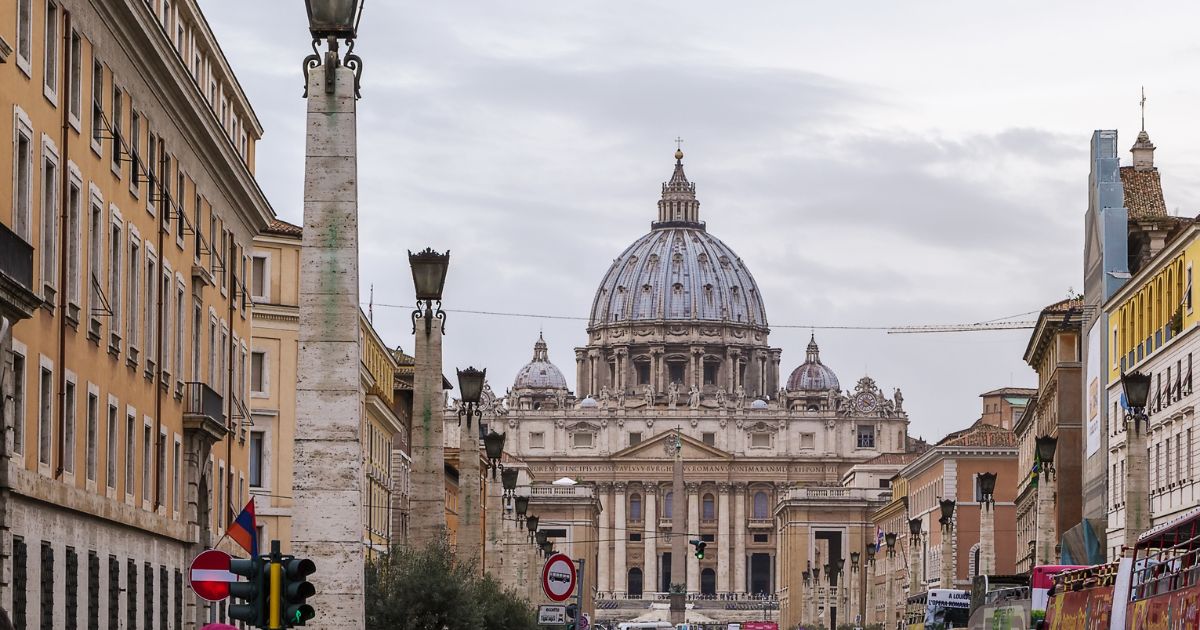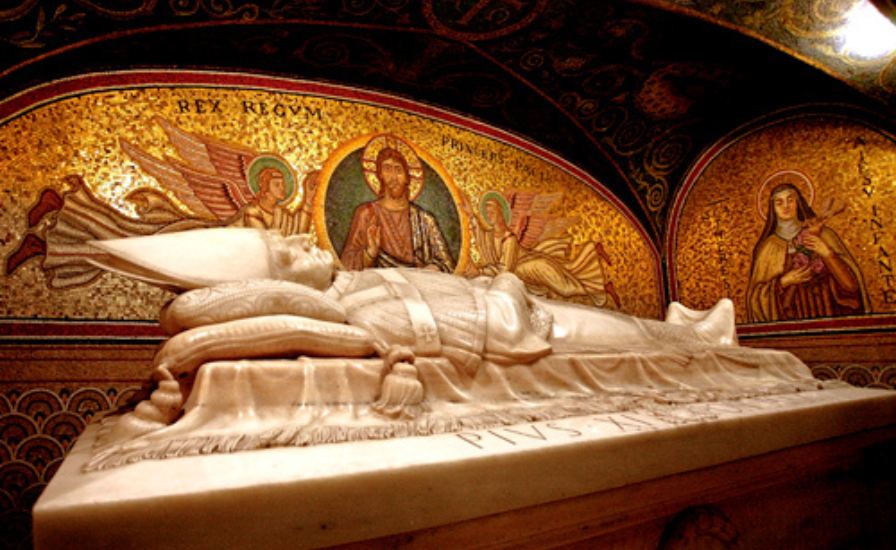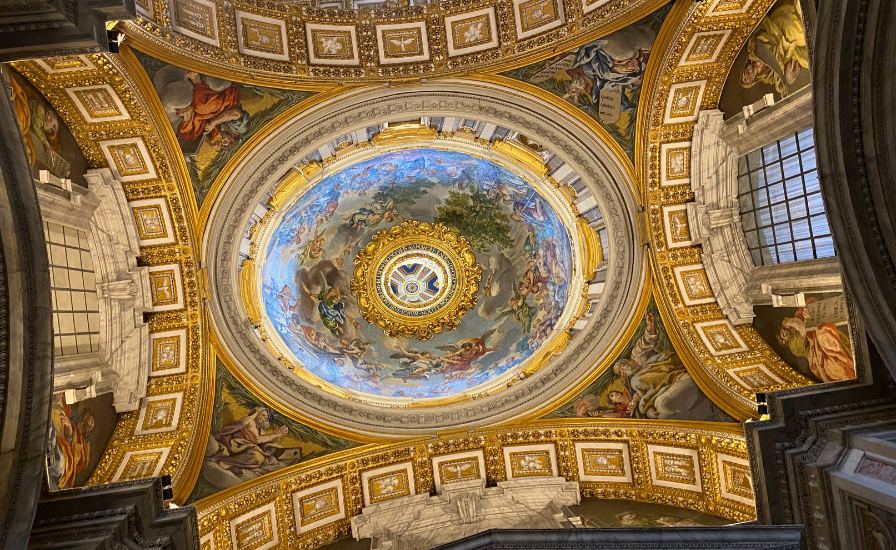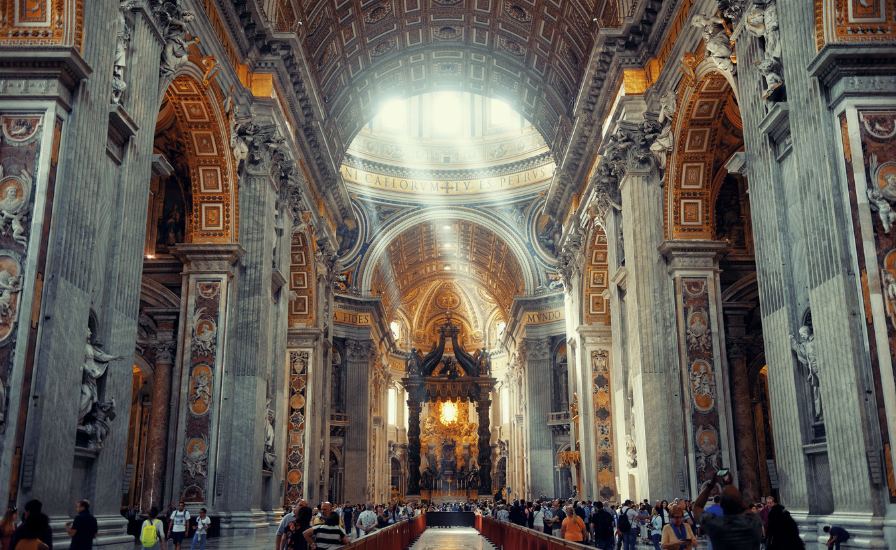What Hidden Gems Are You Missing at St. Peter’s Basilica?

Introduction
Discover hidden gems and secrets of St. Peter’s Basilica, from the Vatican Grottoes to the Mosaic Studio, in this detailed visitor’s guide.
Tools
Supplies
Hidden Gems of St. Peter’s Basilica
St. Peter’s Basilica, nestled in the heart of Vatican City, is a monument renowned for its breathtaking architecture and religious significance. While millions of visitors flock to this site each year to admire its grandeur, many often miss the less conspicuous treasures and hidden gems of St. Peter’s Basilica. Whether you’re a history enthusiast or a spiritual seeker, these concealed aspects offer a deeper insight into the basilica’s rich past and artistic heritage. Here’s a guide to uncovering the secrets of St. Peter’s Basilica and enhancing your visit.
1. The Vatican Grottoes

Picture By: www.mdrevelation.org
Beneath the splendid floors of St. Peter’s lies the Vatican Grottoes, a series of chapels and tombs that house the remains of many popes, including St. John Paul II and St. Peter himself. This hidden gem of St. Peter’s Basilica is less frequented but offers a serene and contemplative experience away from the upper basilica’s hustle and bustle. Visitors can delve into the history of the Church and its leaders through the ages, making it a profound visit for those interested in the spiritual lineage of the papacy.
2. The Treasury
The Treasury of St. Peter’s Basilica is another lesser-known area that holds an impressive collection of church ornaments, statues, and papal regalia. Among these sacred objects are stunning examples of religious art and craftsmanship, including chalices, vestments, and ancient relics. This hidden treasure of St. Peter’s Basilica provides a unique glimpse into the artistic and spiritual heritage of the Catholic Church, showcasing items that are not only historically significant but also masterpieces of religious art.
3. The Pier Luigi Nervi Hall
Located beneath the audience hall adjacent to St. Peter’s Basilica, the Pier Luigi Nervi Hall is often overlooked by casual visitors. Designed by the acclaimed architect Pier Luigi Nervi, this hall is a marvel of modern engineering and design. The hall is used for various papal audiences and can be accessed during less busy times or through special permission. Its architectural design contrasts with the basilica’s Renaissance and Baroque art, offering a different perspective on the Vatican’s embrace of contemporary aesthetics.
4. The Altar of Leo the Great
Deep within the basilica, the Altar of Leo the Great is one of the secrets of St. Peter’s Basilica that many tours overlook. This altar, dedicated to Pope Leo I, features a stunning mosaic that depicts the story of his meeting with Attila the Hun, credited with persuading him to turn back his invasion of Italy. This piece not only offers insight into the Church’s history but also showcases the intricate artistry of mosaic work that adorns many hidden corners of the basilica.
5. The Gregorian Chapel

Dedicated to Pope Gregory XIII, who commissioned the Gregorian calendar, the Gregorian Chapel is a spiritual enclave that houses the revered image of Madonna della Colonna. Although it is slightly hidden, it remains an important place of prayer and reflection. The chapel is beautifully adorned with marble and gold and offers a quieter, more intimate space for prayer and contemplation within St. Peter’s vast interior.
6. The Chapel of the Partula
Not many visitors to St. Peter’s are aware of the Chapel of the Partula, tucked away behind some of the more prominent chapels. This small, often overlooked chapel houses relics of several saints and offers a quiet, contemplative space away from the crowds that throng the main areas of the basilica. Its intricate frescoes, which depict scenes from the lives of the saints, are finely crafted and deserving of more attention than they typically receive.
7. The Clementine Chapel
The Clementine Chapel is another hidden gem, located closest to the presumed tomb of St. Peter. Being one of the most sacred sites within the basilica, it is often reserved for private prayer and is not always open to the public. However, when it is accessible, it offers a profound spiritual connection to the history and core of the Catholic faith. The chapel is named after Pope Clement VIII and is beautifully adorned with marble and precious stones, creating a solemn and hallowed atmosphere.
8. The Mosaic Studio

Few are aware that St. Peter’s Basilica has its own mosaic studio, where skilled artisans work to restore and maintain the historic mosaics that adorn the basilica’s walls and ceilings. Occasionally, tours are available that allow visitors to observe these artisans at work, a unique opportunity to see living artists continue a centuries-old craft that plays a crucial role in the preservation of Vatican art.
9. The Statue of St. Peter Enthroned
While not exactly hidden, the bronze statue of St. Peter Enthroned is a significant work that sometimes doesn’t get the attention it deserves among the basilica’s more gigantic and flamboyant decorations. Tradition holds that pilgrims touch the foot of the statue, which has been worn smooth over centuries. Visiting this statue offers a moment of connection not only to the figure of St. Peter but also to the millions of pilgrims who have come before, each leaving a trace of their devotion.
10. The Choir Chapel
The Choir Chapel, accessible from the left aisle of the basilica, is dedicated to the choir that performs during papal ceremonies. It’s adorned with intricate carvings and beautiful choir stalls crafted from rare woods. The chapel’s acoustics are designed to enhance the choir’s voices, making it an acoustic gem as well as a visual one.
Enhancing Your Experience with Tours and More
To truly uncover these hidden gems, consider taking part in one of the specialized St. Peter’s Basilica tours. These guided tours often provide access to areas of the basilica that are not included in general admissions, such as the dome and the grottoes. Want to know more about the opening hours of St. Peter’s Basilica then click here.
1. St. Peter’s Basilica Dome (Cupola) Tour
A St. Peter’s Basilica cupola guided tour not only allows you to explore the interior of the dome but also provides spectacular views of Vatican City and beyond. Climbing the dome offers a unique opportunity to see the architectural details up close and personal, including mosaics and inscriptions that are invisible from the ground.
2. St. Peter’s Basilica Tours
General St. Peter’s Basilica tours are invaluable for those looking to understand the overall history and significance of the site. These tours can highlight lesser-known facts and features, giving a comprehensive overview of both the visible and hidden aspects of the basilica. You can also take an audio-guided tour of St. Peter’s Basilica and discover everything at your own pace. Continue reading if you want to know more about visiting St. Peter’s Basilica at night or day.
Planning Your Visit
To fully appreciate these hidden treasures of St. Peter’s Basilica, consider these tips for planning your visit:
Book a Guided Tour: Opt for specialized tours that focus on the less-visited parts of the basilica. These can provide deeper insights and access to areas that general tours might not cover.
Visit During Off-Peak Hours: Try to visit early in the morning or during evening hours to avoid the crowds. This allows for a more leisurely exploration and the opportunity to see the basilica in a more serene setting.
Research Before Visiting: Read up on the basilica’s art and history before your visit. This knowledge will enrich your experience and help you appreciate the significance of lesser-known artworks and architectural features.
Attend a Mass: If possible, attend a service in the basilica. This not only offers a spiritual experience but also allows you to appreciate the functional beauty of the church as a place of worship.
In conclusion, St. Peter’s Basilica is a complex of both splendor and subtlety, where every corner holds a story and every artwork has a purpose. Beyond the grandeur of its main altars and the awe-inspiring view from its dome, there are numerous hidden gems waiting to be discovered by those willing to look a little closer and dig a little deeper. Whether you are a first-time visitor or a returning pilgrim, St. Peter’s Basilica promises a rich tapestry of cultural, historical, and spiritual discoveries.St. Peter’s Basilica is a treasure trove of art, history, and spirituality, much of which goes unnoticed by the average visitor. By seeking out the hidden gems of St. Peter’s Basilica, you enrich your visit exponentially, turning an ordinary tour into an extraordinary journey through the heart of Catholic tradition and artistic achievement. Whether it’s through a guided tour, a dedicated exploration of the dome, or a reflective pause in its less-visited chapels, St. Peter’s Basilica offers endless opportunities for discovery and awe.